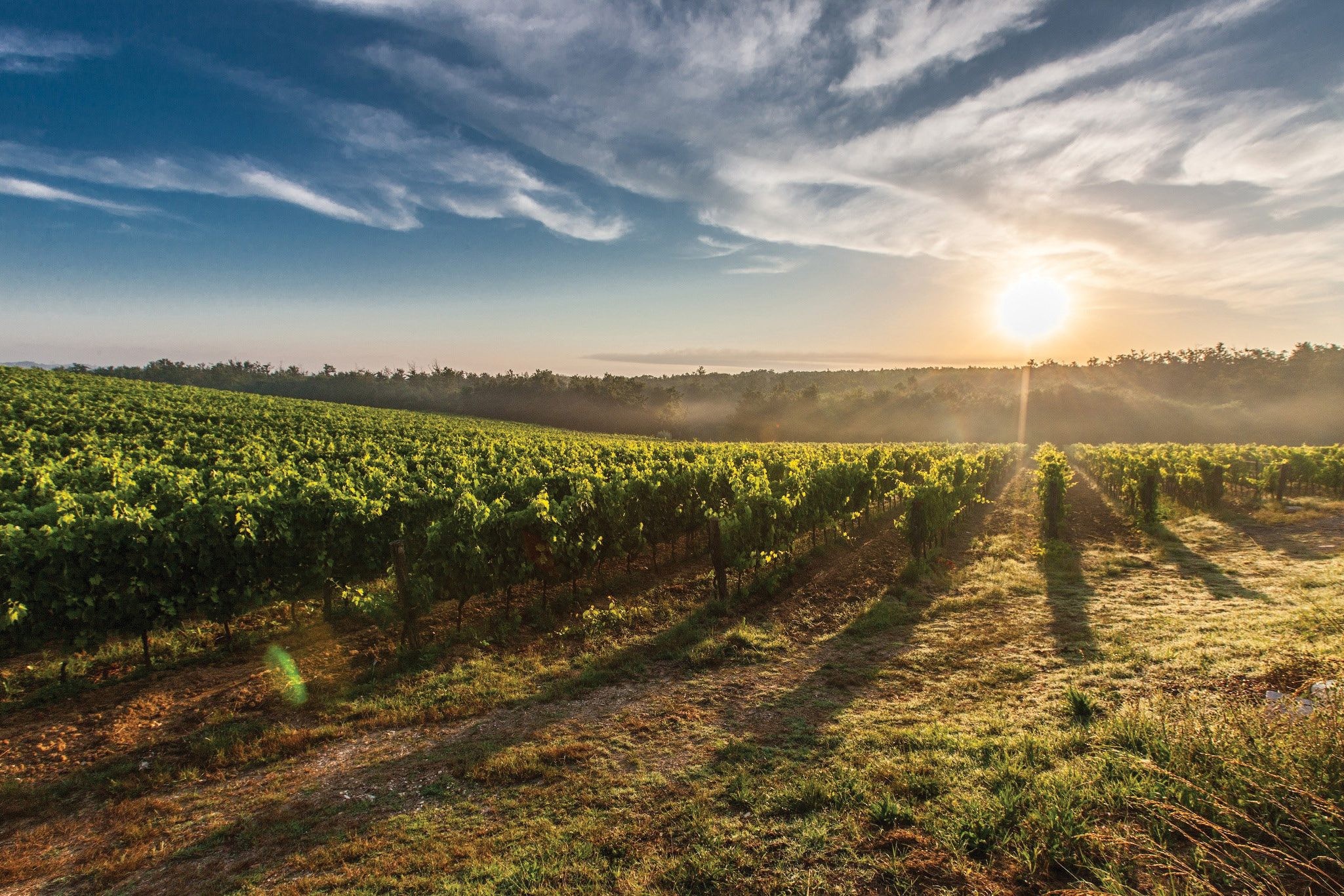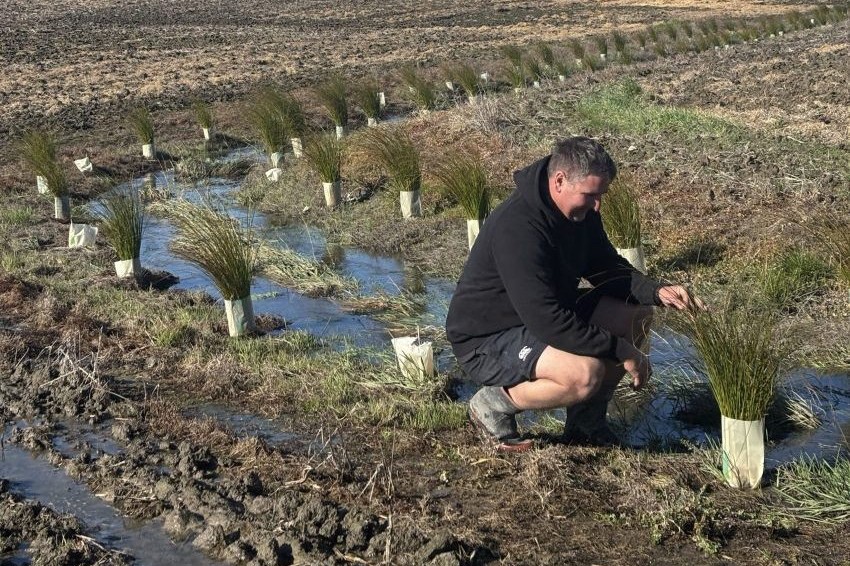Farm vegetation valuable?
By Joanna Grigg

OUT THE TRUCK WINDOW ARE shelterbelts skirting good pasture and, further back, an extensive face of kanuka, mixed with shrubs like coprosma. Will they be worth anything as offsets for greenhouse gas emissions from sheep and cattle grazing nearby?
Whether these carbon sinks become a recognised asset will be decided following farmer feedback at the emissions roadshows. If farmers back either the proposed farm-level or processor-level levy emissions scheme via the there are options to count this woody vegetation as a carbon sink. If agriculture is defaulted into the NZ ETS, it is likely to continue to go unrecognised as a carbon sink.
A yes to one of the levy options would give farms a way to offset some of the financial liability from their emissions. The bottom line is the sequestration rates would be low for indigenous species and a large proportion of the farm would need to be in indigenous shrub cover to match sheep and cattle methane costs. As time rolls on however, it’s likely the cost of sheep and cattle emissions will increase and the farm’s woody vegetation will become more valuable.
He Waka lists the basic principles they recommend for recognising sequestration in their December 2021 discussion document. These are; the faster trees grow, the faster carbon is accumulated. Typically, exotic trees grow faster than indigenous trees. However, unharvested forests (i.e: native forests) store more carbon than clear-fell plantations over the long-term. Secondly, for a given type of vegetation at a particular location, two broad factors impact sequestration: the stage of growth, and the way it is managed.
A pinus radiata forest would be the sprinter’s approach to offsetting and eligible for the NZ ETS, so it may be worth more to have it to be counted in that scheme, rather than an agriculture emissions scheme.
It can’t be counted twice.
The amount of carbon different vegetation types sequester is finite. When vegetation is removed, it can become a source of emissions. All vegetation types that are recognised would need to be maintained in vegetation or face a liability if they are cleared (permanent categories) or cleared and not replanted (cyclical categories). This could be tricky when it comes to cyclical spraying out of hill country to maintain production. If farmers removed it, that would sit as a cost on the so-called emissions balance sheet
Understanding all this is a key issue for farmers with chunks of ‘ineffective’ shrub areas on their land. The pricing scheme they choose will impact pasture management decisions for the future. Some poor value scrub gullies might be rebranded by farmers as handy methane soak patches. Spraying out that regenerating kanuka may bring a liability.
Any resulting scheme is likely to classify vegetation into permanent and cyclical. Under permanent it is either woody vegetation established before 2008, with stock excluded or post-2008 established areas (possibly with a declaration form required from the landowner saying it was grazed in 1990). The third option is riparian plantings more than one metre wide with mixed species. An interesting side thought here – if planting riparian strips, don’t just plant flax and toe toe. Get some trees in too.
The cyclical category vegetation is defined as vegetation that is planted and may be felled and re-established. This kind of forest is not self-sustaining and needs to be replanted to ensure its continuation. To be eligible for the system, all cyclical categories must have been planted on or after January 1, 2008. Within this are perennial crops (think orchards/vineyards planted after 2008), forest and woodlots.
NZ ETS-eligible indigenous forest would not be eligible to be entered into the agriculture pricing system. You can’t double-dip.
Under the processor levy option, signing up to have sequestration onfarm recognised is optional. In this option, farms and collectives would choose to enter into a sequestration management contract voluntarily, but once established it is a legally binding contract, the December proposal suggests. This would keep administration costs lower.
Both the farm-level or processor-level options proposed would recognise sequestration onfarm by following the international accounting approach of ‘additionality’. This means only ‘new’ or above ‘business-as-usual’ sequestration is rewarded. This approach ensures environmental integrity when using carbon removals or offsets to meet climate targets. Additionality is usually determined by setting a year as baseline.
Farmers will have to think back to what cover they had in 2008. The system would reward sequestration by following the additionality approach in two ways. First, setting a baseline year so any sequestration in new vegetation established on or after January 1, 2008 is considered additional. Secondly, setting a baseline of ‘business-as-usual management’ so that any sequestration associated with ecological/vegetation management is considered additional. The use of this baseline allows recognition of vegetation established prior to 1990. Indigenous vegetation established before January 1, 2008 would be rewarded with an annual rate. Farmers would need to provide proof of active management (stock exclusion). The amount of sequestration rewarded would depend on the age and state of the vegetation. This opens up off-setting potential for all those areas of original bush that were previously excluded.
Cyclical vegetation would be rewarded by recognising the long-term average carbon stock. This is the average carbon after considering losses from harvesting and gains from replanting.
The proposal also suggests if an area of vegetation were significantly damaged or destroyed by an adverse event, the farm would not face any penalty. It would no longer receive recognition for the sequestration in that area until it reached the same state it was in prior to the adverse event.
Board could set levy price
Farmers will get more choice and control over greenhouse gas costs if they keep out of the emissions trading scheme market suggests He Waka Eke Noa.
This was outlined in its December pricing proposal to dairy and red meat farmers.
It suggests picking one of the two partnership pricing options floated, as costs would be much less than the NZ ETS. The proposed levy could be set and controlled by an advisory board with some agriculture representatives. It does add that estimated costs for the two options (farm-level or processor-level) are still to be determined.
Initial costs in the proposed Farm-Level Levy model range between $0.09 and $0.19/kg sheep meat and $0.06 and $0.29/kg beef.
If agriculture is defaulted into the NZETS then the agriculture sector would have no control over the carbon price, with demand driven by other sectors of the economy. Speculators drove the carbon price beyond $65/NZ Unit (NZU) when units were released late 2021. The Climate Change Commission indicated that ETS charge for agriculture could start at 5% of the true price in 2025, with the portion increasing about one percent every year. By 2050 the next generation of farmers could face paying 30% of what could be a hefty emissions cost.
The idea floated by HWEN is for an advisory board to set a price, allowing a balance between agriculture interests and climate change objectives. Any levy coming in could pay sequestration offsets, and fund research to help lower stock emissions.
The official line is that farmers should expect levy prices to start at a broad base, then increase in the short to medium term to create revenue to fund sequestration and technology.
In either option, groups of farms would have the choice to register as a collective and report their emissions to reduce and offset them. Farm enterprises could link their farms and submit a single return, or industry assurance programmes could use their current systems to report on behalf of their suppliers.
Within the farm-level option, breeding farms would face more of the cost because an animal spends most of its time on this type of farm, compared to finishing. The impact will be higher for red meat farms than dairy, due to lower emissions intensity for dairy production. It would impact the viability of some red meat farming systems.
More detailed cost modelling will be presented at the roadshows.
Climate Change Action Partnership
Beef + Lamb New Zealand ∙ Dairy NZ ∙ Federated Farmers of NZ ∙ Horticulture NZ ∙ Federation of Maori Authorities ∙ Ministry for the Environment ∙ Ministry for Primary Industries ∙ Foundation for Arable Research ∙ Dairy Companies Association ∙ Deer Industry NZ ∙ Meat Industry NZ∙ Irrigation NZ ∙ Apiculture NZ.




